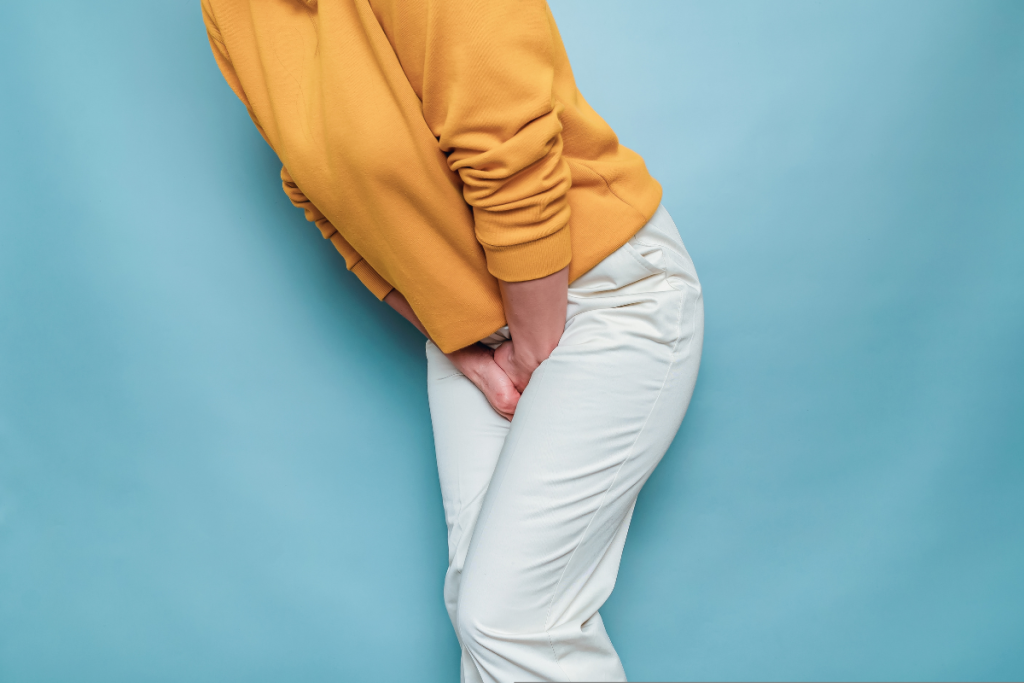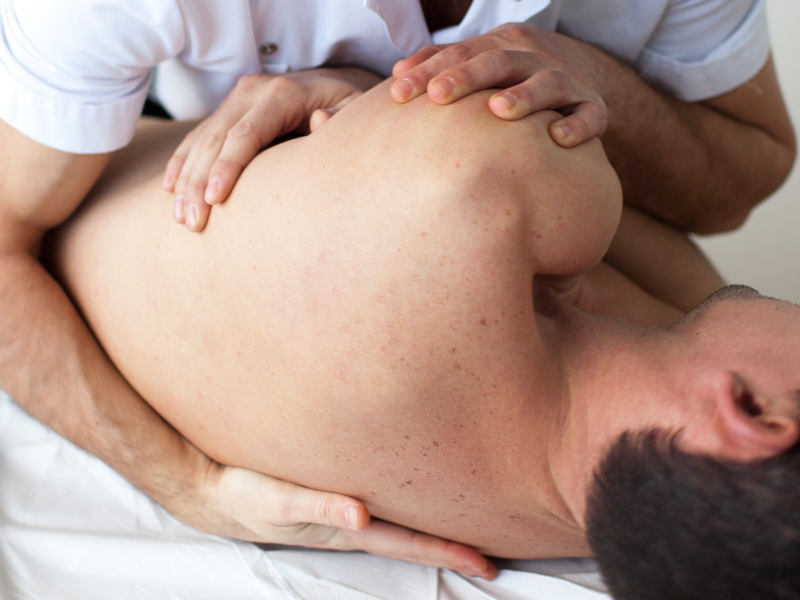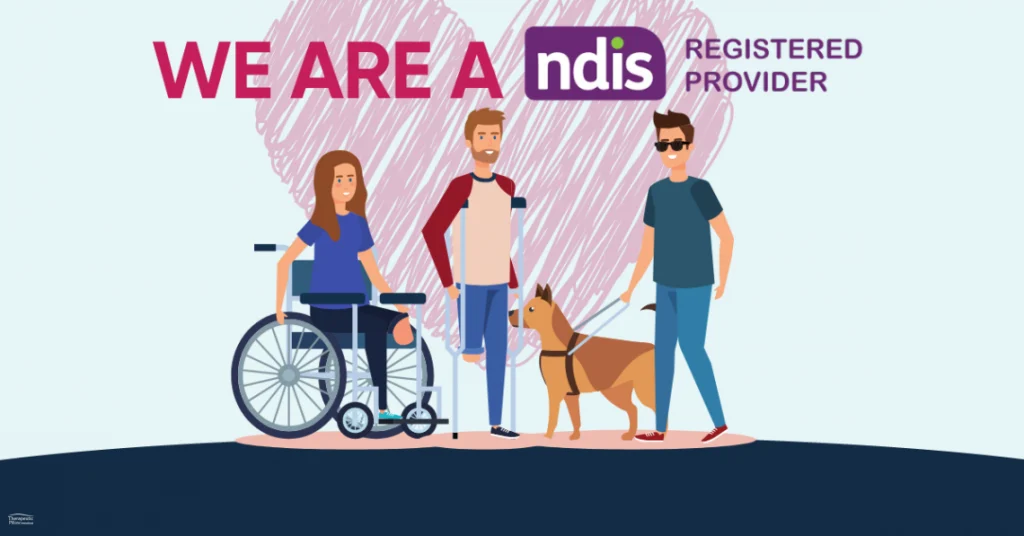Anyone can experience incontinence at any age or due to different health conditions.
Managing it is the first step to minimise the consequences of it, and at Therapeutic Pillows we want to provide you with the tools for it. Secrets to Stay Dry and Comfortable with Steri-Plus Waterproof Cushions and Bedding
Incontinence can be challenging to manage, not just from the physical aspect, but for the psychological implications.
Unveiling Incontinence: A Personal Battle
Incontinence, in plain terms, is the unexpected escape of urine or even feces. It's an equal-opportunity disrupter that can strike anyone, anytime, anywhere. From those awkward leaks to full-on accidents, incontinence can be the symptom of an underlying bigger problem.
There are many types of incontinence, and each of them is related to other health conditions.
- Stress Incontinence: Imagine this scenario – you're in the middle of a hearty laugh, lifting something heavy, or even just sneezing, and suddenly, urine escapes. That's stress incontinence for you. It occurs when you put pressure on your bladder during activities like coughing, sneezing, laughing, exercising, or lifting something heavy. It's like your bladder's sneaky way of playing a prank when you least expect it.
- Urge Incontinence: Now, picture this – you're minding your own business, and out of nowhere, an intense urge to urinate hits you like a tidal wave. Before you can make it to the restroom, whoops – an involuntary loss of urine occurs. This is urge incontinence in action. You might find yourself needing to rush to the bathroom frequently, even during the night. It can be triggered by various factors, from minor issues like infections to more serious concerns like neurological disorders or diabetes. It's like your bladder has a mind of its own.
- Overflow Incontinence: Do you ever feel like you're constantly dribbling urine? Overflow incontinence might be the culprit. It's caused by a bladder that doesn't empty completely. Instead of a full and satisfying release when you urinate, there's a persistent dribble that can be frustrating and embarrassing. It's like your bladder is playing a never-ending game of "not quite done yet."
- Functional Incontinence: Sometimes, it's not your bladder's fault; it's the circumstances. Functional incontinence occurs when a physical or mental impairment keeps you from reaching the toilet in time. It's like having the urge to go but facing obstacles that slow you down. For instance, if you have severe arthritis and can't unbutton your pants quickly enough, functional incontinence steps in to make life a tad more complicated.
- Mixed Incontinence: Life can be unpredictable, and so can incontinence. Sometimes, you might experience a combination of urinary incontinence types. It's like a mixtape of stress incontinence and urge incontinence playing simultaneously. Mixed incontinence adds an extra layer of complexity, as your bladder decides to keep you on your toes with a blend of symptoms.
The Culprits Behind the Curtain: Why Does Incontinence Happen?
Muscles on the Loose: Weakened pelvic floor muscles, whether from pregnancy, aging or those extra pounds, can trigger stress incontinence – think laughter or a sneeze that leads to a surprise.
- Nerve-Wracking Moments: Sometimes, nerve damage from conditions like diabetes or multiple sclerosis can turn your bladder into a rebellious troublemaker, causing urge incontinence.
- Prostate Puzzles: Men, an enlarged prostate can cramp your style, leading to overflow incontinence.
- Medication Mishaps: Watch out for certain meds, like diuretics or sedatives; they can be sneaky contributors to incontinence.
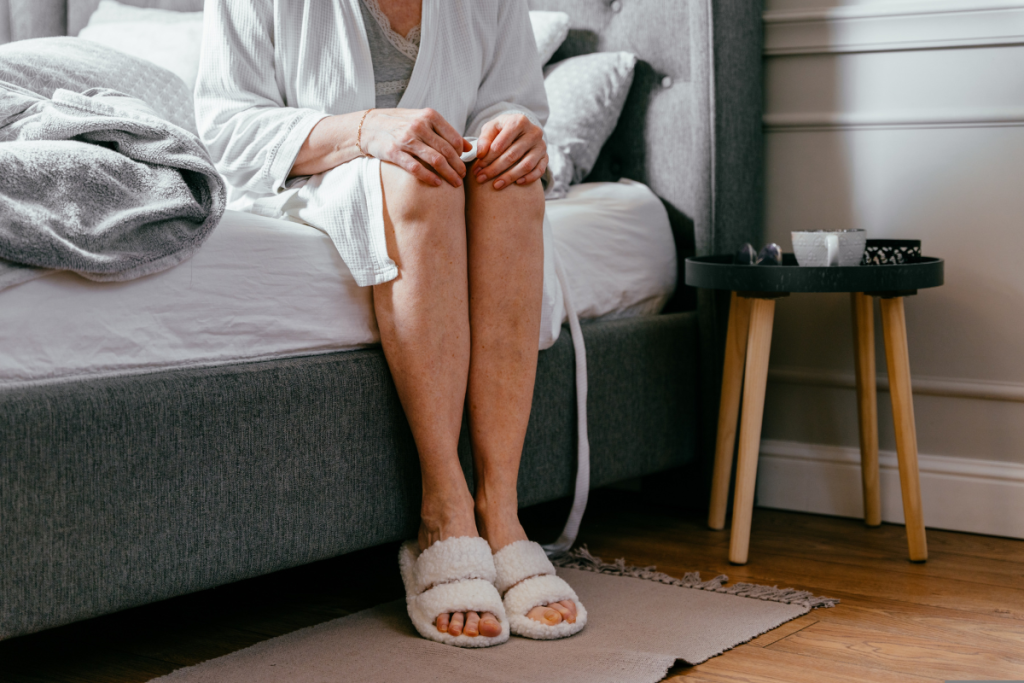
Who's in the Line of Fire? Meet the Most Affected Ones
Incontinence doesn't discriminate; it can happen at different age stages. However, it more common among:
Elderly: As we journey through life, the aging process inevitably takes its toll on our bodies, including our urinary systems. For the elderly, incontinence can become common in older people due to several age-related factors. Muscles and nerves that once worked seamlessly to control the bladder may gradually lose their strength and efficiency over time. This natural aging process can lead to weakened pelvic floor muscles and less responsive nerve signals, making it more challenging to maintain bladder control.
For the elderly, incontinence can manifest in various ways, from occasional leaks during laughter or coughing (stress incontinence) to sudden, strong urges to urinate with potential involuntary leaks (urge incontinence). It's part of the aging journey that many individuals face, and understanding these changes is essential in adapting to and managing this new aspect of life.
Ladies in the House: For women, the experiences of childbirth and menopause introduce unique challenges when it comes to urinary control. Childbirth, especially vaginal delivery, can place significant stress on the pelvic floor muscles. These muscles are like a hammock that supports the bladder and other pelvic organs. Over time, the strain from childbirth can lead to weakened pelvic floor muscles, making it easier for urine to escape during moments of increased abdominal pressure, such as sneezing, laughing, or lifting (stress incontinence).
Additionally, menopause brings hormonal changes that can affect bladder health. Estrogen, a hormone that helps maintain the health of the bladder and urethra, declines during menopause. This hormonal shift can lead to changes in the bladder lining, increasing the risk of urinary urgency and frequency (urge incontinence). So, for women who've experienced the joy of childbirth and the transition into menopause, incontinence may become a dance partner they didn't anticipate.
Medical Conditions: Sometimes, incontinence is not solely a result of aging or life stages but can be triggered or worsened by underlying medical conditions. Two common culprits in this regard are diabetes and neurological disorders.
- Diabetes: Diabetes can have a domino effect on your urinary system. High blood sugar levels can damage the nerves controlling the bladder, leading to improper signalling. This can result in either an overactive bladder (urge incontinence) or a bladder that doesn't empty properly (overflow incontinence). Managing diabetes is crucial not only for overall health but also for maintaining urinary control.
- Neurological Disorders: Conditions like multiple sclerosis or stroke can disrupt the communication between the brain and the bladder. This miscommunication can cause unexpected and uncontrollable urges to urinate (urge incontinence) or even affect the ability to empty the bladder (overflow incontinence). Individuals dealing with neurological disorders may find that incontinence gate-crashes their lives, making daily routines more challenging.
Navigating a Postoperative Challenge
While surgery is often the path to improved health, it can sometimes bring unexpected challenges, including temporary incontinence. This occurrence, known as postoperative incontinence, can be a result of several factors related to the surgical process.
One of the primary reasons for postoperative incontinence is the impact of anesthesia. Anesthesia can temporarily affect the bladder's ability to function normally, leading to difficulty controlling urination in the immediate hours or even days following surgery. This can manifest as urgency, frequency, or even leakage.
Additionally, the physical trauma from surgery, especially if it involves procedures near the pelvic area, can cause stress on the bladder and pelvic floor muscles. Swelling, inflammation, and tissue trauma can disrupt the usual coordination between the muscles and nerves involved in urinary control.
The combination of reduced mobility after surgery, medications that may affect bladder function, and the body's response to surgical trauma can create a temporary state of incontinence during the recovery period. It's essential for individuals preparing for surgery to discuss these potential issues with their healthcare team and plan for appropriate strategies to manage postoperative incontinence, such as using protective bedding and cushions like Steri-Plus to maintain comfort and dignity during the recovery process. Remember, incontinence during recovery is usually a transient issue that can be effectively managed with the guidance of medical professionals.
Childhood Incontinence.
Incontinence is not limited to adulthood; it can also affect children, and this experience can be particularly challenging for both the child and their caregivers. Childhood incontinence often falls into two main categories: daytime incontinence (diurnal enuresis) and nighttime incontinence (nocturnal enuresis).
- Daytime Incontinence: This form of incontinence can manifest as involuntary urination during waking hours, and it may be triggered by various factors, such as a weak bladder, urinary tract infections, or even emotional stress. Parents and guardians need to approach daytime incontinence with patience and understanding, as it can have emotional and social implications for the child. Consulting a paediatrician can help identify the underlying causes and develop an appropriate treatment plan.
- Nighttime Incontinence: Nocturnal enuresis, commonly referred to as bedwetting, is a prevalent issue in childhood. It can be attributed to factors like delayed maturation of the bladder, genetics, or a family history of bedwetting. Nighttime incontinence typically resolves naturally as a child grows, but it can still be distressing for both the child and their parents. Encouragement, support, and occasionally, medical intervention can aid in managing this condition and ensuring a smoother transition to dry nights.
Childhood incontinence should be addressed with sensitivity and empathy, and it's crucial to rule out any underlying medical conditions or emotional stressors that may be contributing to the issue. Open communication with healthcare providers can guide families in understanding and effectively managing incontinence in children, promoting their physical and emotional well-being as they navigate this delicate phase of development.
The Unseen Dangers of Incontinence
Let's get real – untreated incontinence can wreak havoc on your health, leading to:
Health Complications and the Impact on Cushions and Mattresses
Incontinence can bring about a range of medical complications that not only affect the individual's well-being but also have implications for the longevity and hygiene of their bedding and cushions. Let's explore these medical complications and how they can impact your sleep environment.
- Skin Irritation and Infections: Constant exposure to urine can lead to skin irritation, especially in the genital and perineal areas. Over time, this can progress to more severe issues like skin breakdown and urinary tract infections. The skin's natural defence mechanisms may be compromised, making it more susceptible to bacterial and fungal infections.
- Urinary Tract Infections (UTIs): UTIs are a common consequence of incontinence. The frequent contact of urine with the urethra can introduce bacteria into the urinary tract, potentially causing painful infections. UTIs can be recurrent and may lead to more severe complications if left untreated.
- Sleep Disruption: Incontinence-related awakenings during the night disrupt sleep patterns, leading to fatigue and decreased overall well-being. Poor sleep quality can have a cascading effect on one's physical and mental health, impacting daytime functioning and quality of life.
As for the impact on bedding and cushions, it's essential to recognize that urine, if not properly managed, can penetrate the materials, leading to several issues:
- Odour: Persistent exposure to urine can result in lingering odours in mattresses and cushions, making your sleep environment less pleasant.
- Deterioration: Urine can break down the materials of cushions and mattresses over time, reducing their lifespan and comfort.
- Bacterial Growth: Moisture from urine can create an ideal environment for the growth of bacteria and fungi within the bedding materials, potentially exacerbating skin and respiratory issues.
To mitigate these complications, it's crucial to use protective measures such as waterproof bed sheets and mattress protectors. These specialized bedding items act as a barrier, preventing urine from seeping into the mattress or cushion. In addition, investing in cushions covered in Steri-Plus, a waterproof, moisture-resistant, and bacteria-resistant material, can provide peace of mind by ensuring both your comfort and hygiene. Proper hygiene and regular cleaning of bedding and cushions are essential to maintain a healthy sleep environment, free from the potential health risks associated with incontinence-related leaks.
Mental Mayhem: The Invisible Struggles of Incontinence
Incontinence is not merely a physical condition; it carries profound psychological implications that can significantly impact an individual's emotional well-being and overall quality of life. Let's delve deeper into the psychological toll that incontinence can exact:
- Down in the Dumps: The Emotional Weight
Living with incontinence often brings a pervasive sense of embarrassment and a feeling of being out of control. Imagine the emotional turmoil of not being able to trust your body when you need it most. This constant worry about unexpected leaks, even in the most mundane situations, can be emotionally exhausting. The fear of embarrassment and the loss of control over one's bodily functions can serve as catalysts for depression and anxiety.
- Depression: Incontinence can lead to persistent sadness, hopelessness, and a sense of worthlessness. The emotional burden of dealing with leaks and the social stigma attached to incontinence can wear individuals down, eroding their self-esteem and overall happiness.
- Anxiety: The constant fear of potential leaks, especially in public settings, can trigger anxiety. Anxiety may manifest as restlessness, racing thoughts, or even panic attacks. Individuals with incontinence may find themselves constantly on edge, anticipating the next humiliating episode.
- Social Withdrawal: Isolation Amidst Isolation
Incontinence can foster a pervasive fear of public embarrassment. The anticipation of leaks during social interactions or outings can lead to a significant reduction in one's social activities and connections. This fear-induced social withdrawal can result in a shrinking social circle, as individuals with incontinence may avoid gatherings, outings, or even close relationships for fear of judgment or ridicule.
- Isolation: Social withdrawal can be isolating, both emotionally and physically. It can lead to feelings of loneliness and alienation from friends and loved ones. The sense of being different or flawed can create a self-imposed barrier, preventing individuals from fully participating in life's social and recreational activities.
- Impact on Relationships: Incontinence can also affect relationships with family members and partners. The emotional strain it places on individuals may spill over into their interactions with loved ones, potentially leading to strained relationships and decreased intimacy.
Understanding the psychological toll of incontinence is crucial for providing holistic care and support. It's important for individuals living with incontinence to seek emotional support and professional help if needed. Mental health resources, therapy, and support groups can offer coping strategies and a safe space to express feelings and concerns. By addressing the psychological aspects of incontinence alongside its physical challenges, individuals can work toward regaining their emotional well-being and maintaining their social connections, ultimately improving their overall quality of life.
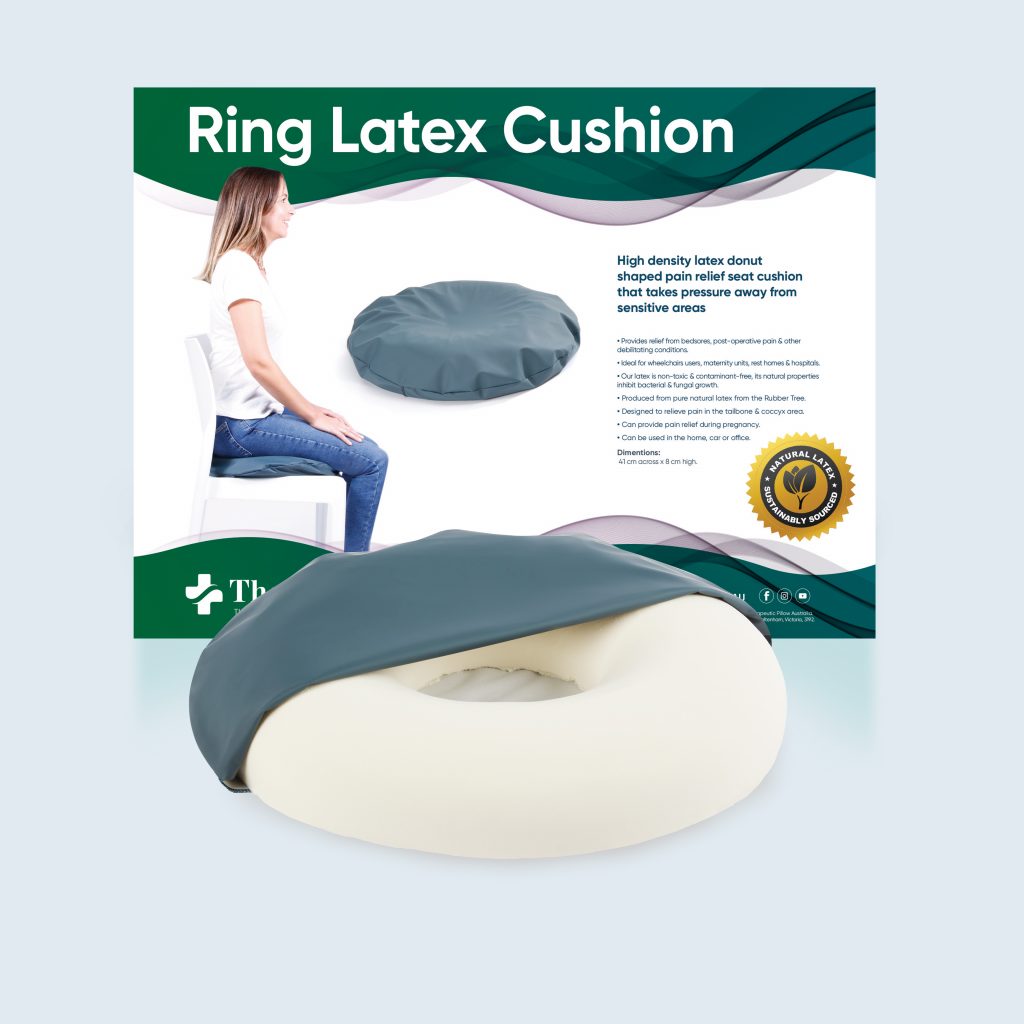
Shielding Your Comfort with Steri-Plus Waterproof Cushions and Bedding
Incontinence isn't just your problem; it can affect your cozy cushions and mattresses too. Think of odour, deterioration, and those sneaky bacteria. Enter Steri-Plus, your trusty sidekick! It's waterproof, moisture-resistant, and can ward off bacteria.
Managing Incontinence One Step at a Time
Living with incontinence can be challenging, but there are practical steps you can take to regain control and maintain your comfort, both at home and outside. Here's a guide to managing incontinence, one step at a time:
Step 1: Understanding Incontinence
First things first, educate yourself about incontinence. Understand the type you're dealing with – whether it's stress, urge, overflow, functional, or a mix of them. Knowing your specific challenges will help you and your healthcare provider formulate a targeted plan.
Step 2: Seeking Professional Guidance
Consulting a healthcare professional is vital. They can identify underlying causes, recommend suitable treatments or lifestyle changes, and guide managing incontinence effectively.
Step 3: Managing Incontinence Outside Your Home
Incontinence doesn't take a break when you step out of your front door. For added peace of mind, consider carrying adult pull-up pants or incontinence pads when you're away from home. These discreet options can help manage leaks with confidence and allow you to maintain your active lifestyle.
Step 4: Protecting Your Sleeping and Seating Environment
At home, create a comfortable and hygienic environment. Invest in waterproof bed protectors to shield your mattress from moisture and bacteria. Additionally, opt for cushions covered in Steri-Plus material. Steri-Plus is a waterproof, moisture-resistant, and bacteria-resistant fabric that not only ensures your cushions stay fresh but also provides a clean and comfortable seating experience.
Taking Control of Your Well-Being
Incontinence may present challenges, but it doesn't have to define your life. By taking these steps one at a time, you can manage incontinence effectively, both at home and outside. Understanding your condition, seeking professional guidance, using appropriate products, and protecting your living space can empower you to regain control and maintain your comfort. Remember, a good night's sleep and peace of mind are your birthright, and with the right approach, you can banish discomfort and take charge of your well-being.
Creating a supportive environment involves both emotional and practical adjustments. Use empathetic communication to understand their needs and concerns. Practically, arrange furniture for easy access, ensure bathrooms are accessible, and utilize protective products to maintain dignity and cleanliness.
 0
0 0
0Diet plays a significant role in managing incontinence. Certain foods and beverages, like caffeine, alcohol, and acidic foods, can irritate the bladder. A high-fiber diet helps maintain regular bowel movements, reducing incontinence incidents. Monitoring fluid intake is also crucial.
 0
0 0
0Establishing a consistent toileting schedule can greatly assist in managing incontinence. Incorporating regular skin care routines to prevent irritation and maintaining a balanced diet can also contribute to better incontinence management.
 0
0 0
0Bladder incontinence, also known as urinary incontinence, is a condition characterized by the involuntary loss of urine from the bladder. It can be caused by various factors, including weakened pelvic floor muscles (stress incontinence), sudden and intense urges to urinate (urge incontinence), incomplete bladder emptying (overflow incontinence), physical or mental impairments that hinder reaching the toilet in time (functional incontinence), and sometimes a combination of these factors (mixed incontinence). Bladder incontinence can affect individuals of all ages and genders and can have physical, emotional, and social implications. Understanding its types and underlying causes is essential for effective management and treatment.
 0
0 0
0Incontinence is a condition that affects the control of bladder or bowel movements. It can cause unintentional leakage of urine or feces, leading to embarrassing situations and affecting a person's quality of life. Incontinence can occur due to various reasons, such as weakened pelvic floor muscles, nerve damage, hormonal changes, or certain medical conditions. It is more common in older adults, women who have given birth, and individuals with certain health issues. However, it is important to note that incontinence is not a normal part of aging and can be managed or treated with the help of healthcare professionals.
 0
0 0
0
